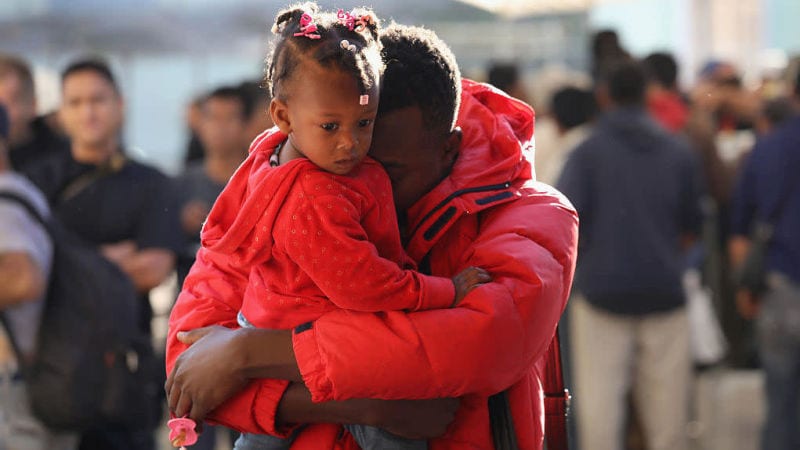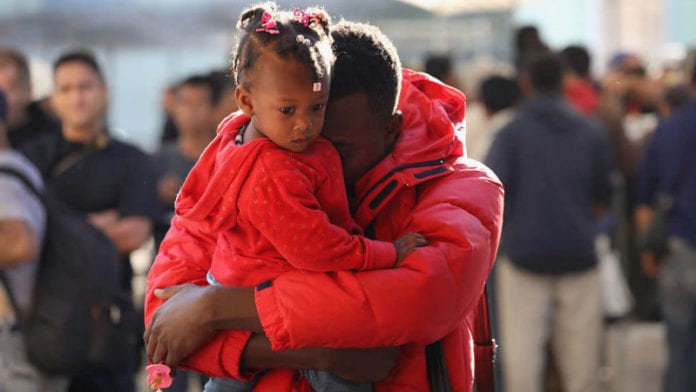
A school vice principal from Cameroon fleeing ethnic violence; a mother and child from Haiti searching for a better life; a construction worker from Angola fleeing religious persecution.
While much of the narrative surrounding the Trump administration’s immigration policy has focused on immigrants from Central America at the U.S.-Mexico border, immigrants fleeing violence or poverty in countries throughout Africa are increasingly among those seeking asylum, the Los Angeles Times reports.
Donald Trump’s current immigration policy limits the number of people who can apply for asylum each day, leaving thousands of people in limbo in Mexico waiting to be allowed through the port of entry into the U.S. to make their case.
The situation has led to many refugees setting up informal camps near the U.S. border as they wait for their number to be called. Conditions are squalid, with overflowing toilets, mosquitoes, and temperatures approaching 100 as some have waited in tents as long as six months, according to the Times:
Luis, a school vice principal, fled Cameroon to escape ethnic violence between his English-speaking minority and the French-speaking majority there. He’s been waiting more than six weeks at an informal camp in Ciudad Acuña located in Mexico on the border with the U.S.
Advertisement
As the Times reports:
Under a Trump administration policy called metering, U.S. authorities allow only a handful of asylum seekers, if any, to pass through ports of entry each day. Luis had gone initially to Matamoros, across from Brownsville, Texas. But finding himself number 1,913 on the informal wait list there, he followed a Cameroonian friend to Acuña. Now his number is 315.
“Very few people are taken; others are going illegally,” he said.
Also in Acuña, is Bernard Manuel, a construction worker from Angola who fled his country to escape religious persecution, including memories of violence that left his parents and brother dead, according to the Times:
Manuel said he was in Luanda when his mother, father and brother were killed in an infamous April 16, 2015, police raid on a dissident sect of the Seventh-day Adventist Church. The sect had thousands of followers in Angola, but the government had declared it illegal.
“The police killed many people,” Manuel said.
Continued religious persecution forced him to flee in January, he said, first to South Africa, then to Ecuador, where he began the trip north.
Advertisement
The Trump administration says its metering policy is needed to control the numbers of asylum seekers, but advocates say the policy violates U.S. law that says people have a right to seek refuge in the U.S.
And with the great geographic distance, people from as far away as Africa have come, it’s not as easy for authorities to simply turn their backs.
Advertisement
As the Times explains:
In 2018, the last year with complete data, Mexican immigration authorities encountered nearly 3,000 African migrants. In the first four months of this year, they already had encountered nearly 2,000, with Cameroon, Congo and Angola the top countries of origin.
Unlike Central Americans, whom the Mexicans can readily turn back, the country has no effective way to return Africans to their homelands. Instead, Mexican authorities typically issue 20-day transit visas. From January through the end of April, Mexican authorities removed just five Africans from the country, official figures show. By comparison, they removed more than 146,100 Central Americans.



